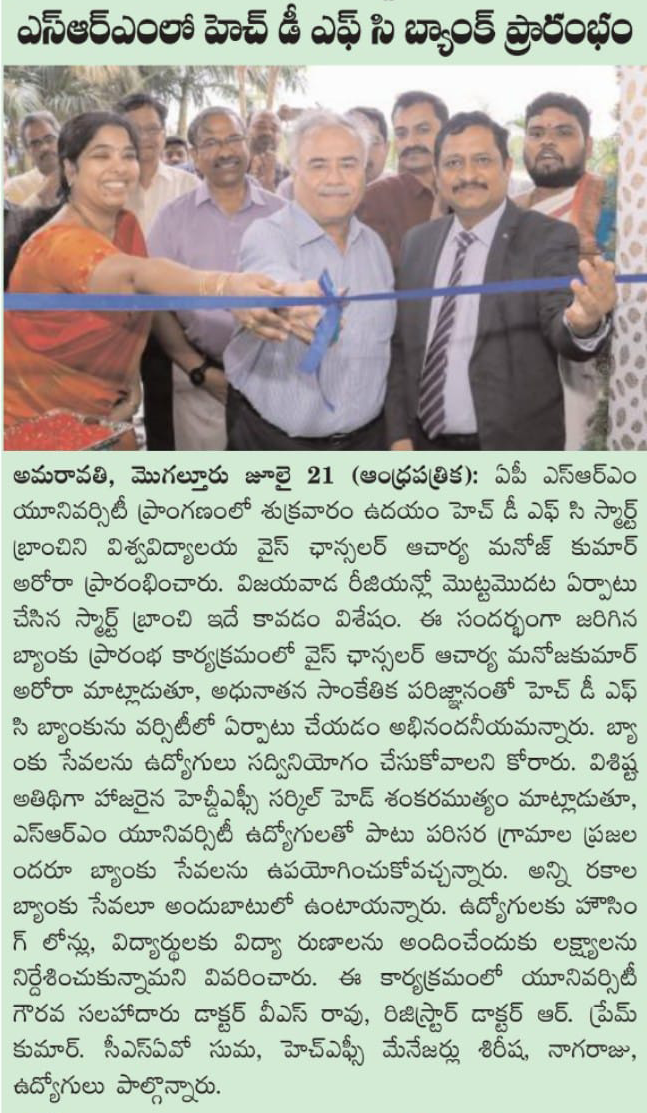All Management Events
- Dr Sebanti Chatterjee August 3, 2023
- Dr Prateek Gupta August 2, 2023
- Dr Choiti Bandyopadhyay August 1, 2023
- Dr Inturi Anitha Rani August 1, 2023
- Basina Deepakraj August 1, 2023
- Dr Sanjeev Mani Yadav July 28, 2023
- Establishing A University as A Thought Leader: Strategies for Effective Brand Building July 25, 2023
DNP India
Continue reading →
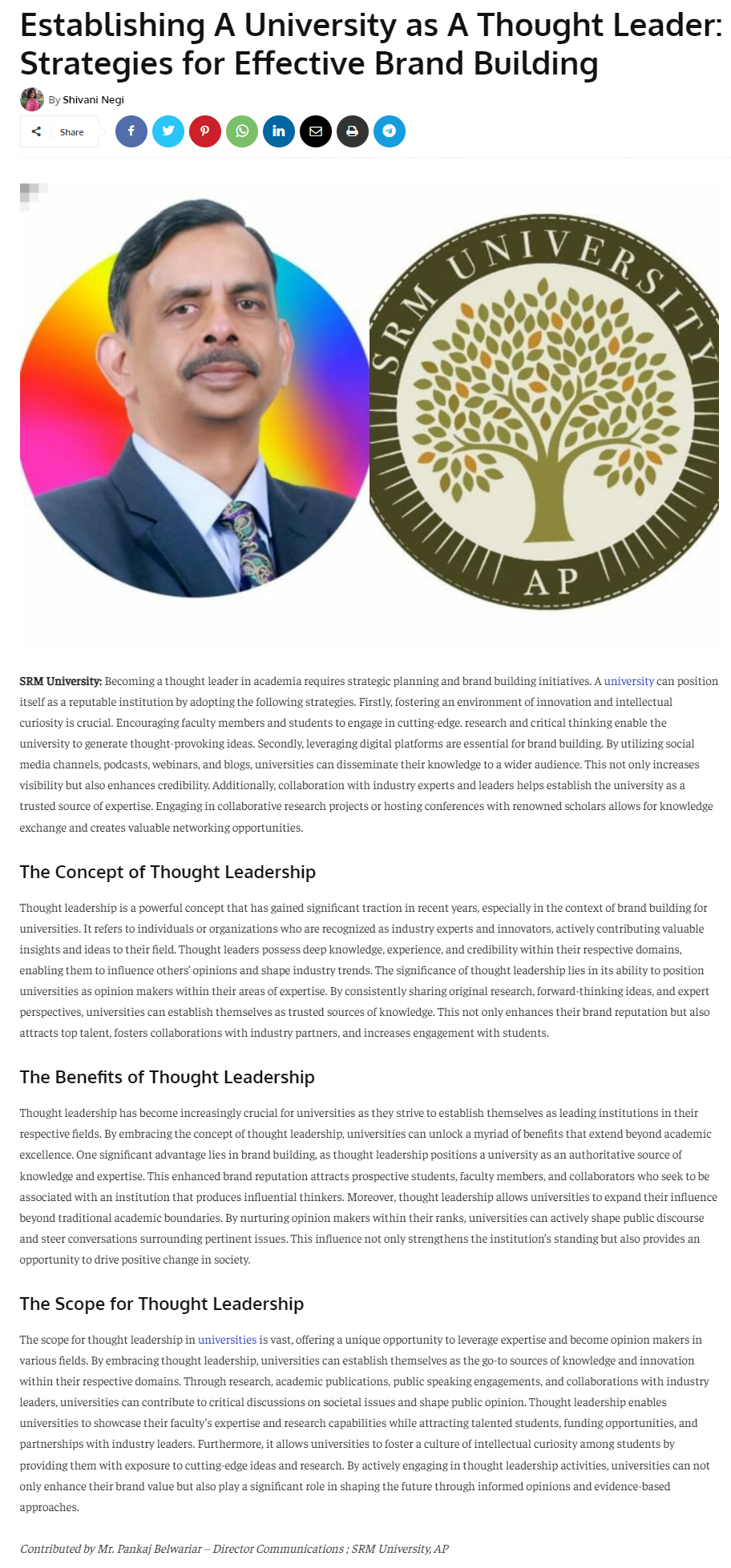
The Academic Insights
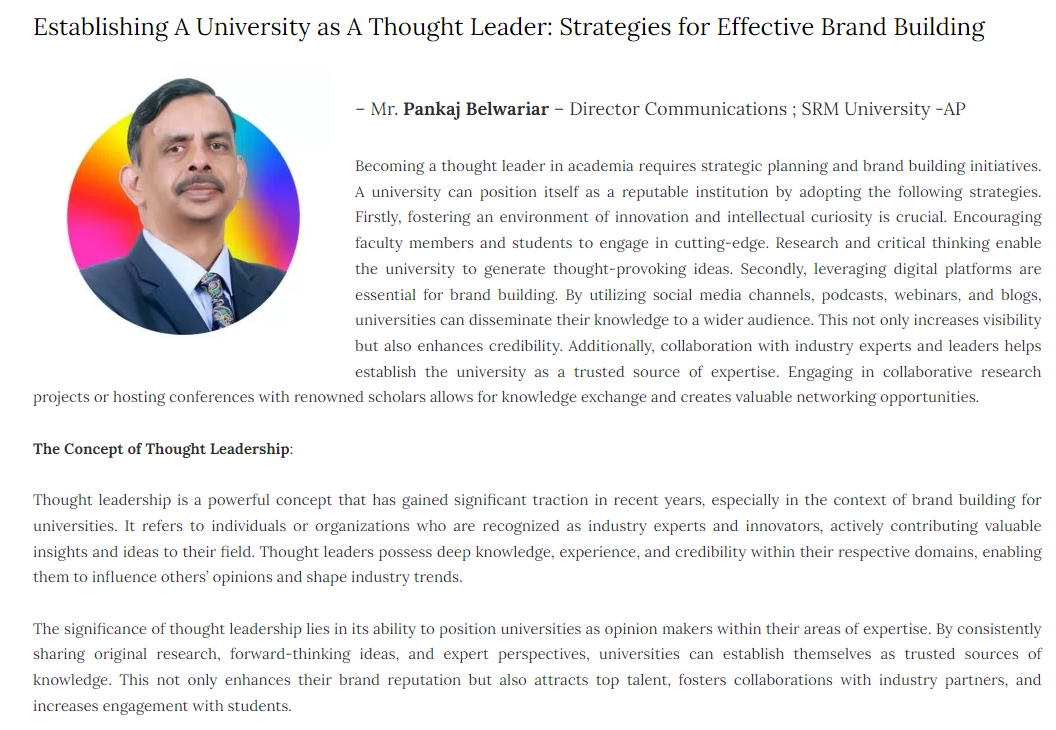
Indian Preneur
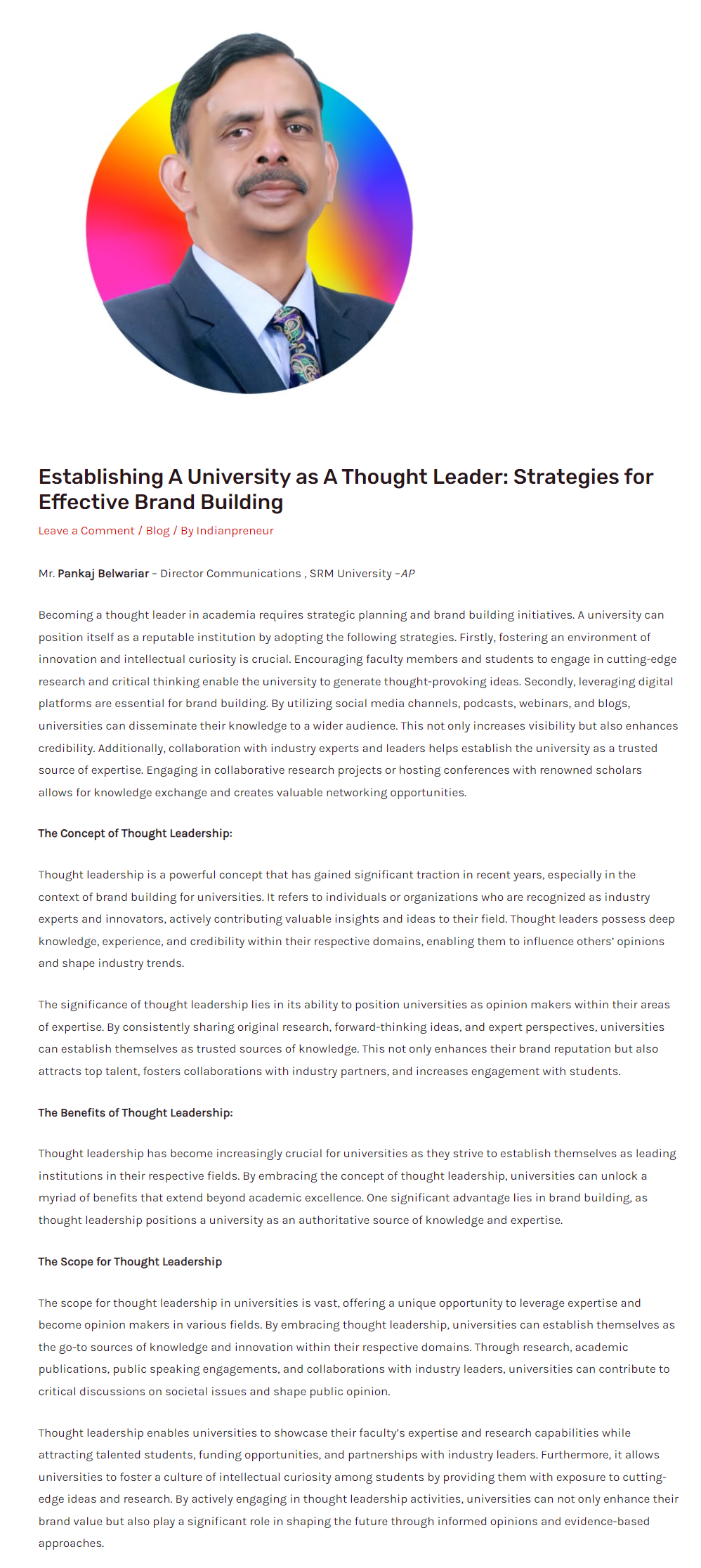
- ISRO’s Chandrayaan-3 Journey to the south pole of Moon and our Possible Initiatives July 25, 2023
DNP India
Continue reading →

- SRM University-AP Awarded Promising University for Curriculum Design and Development July 24, 2023
The New India Express
Continue reading →

The Pioneer
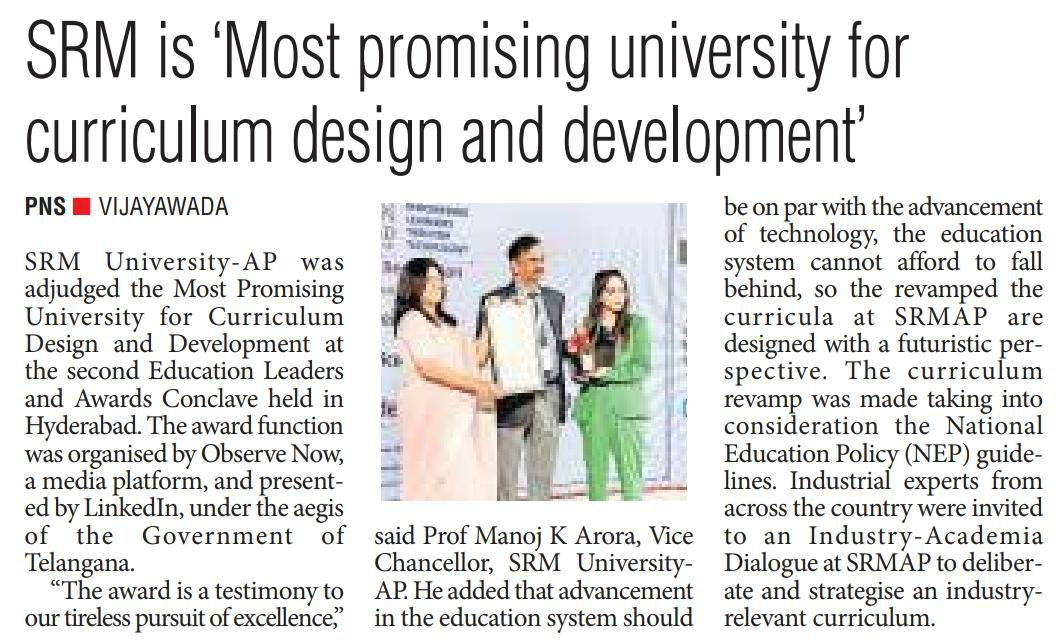
The Hans New Service
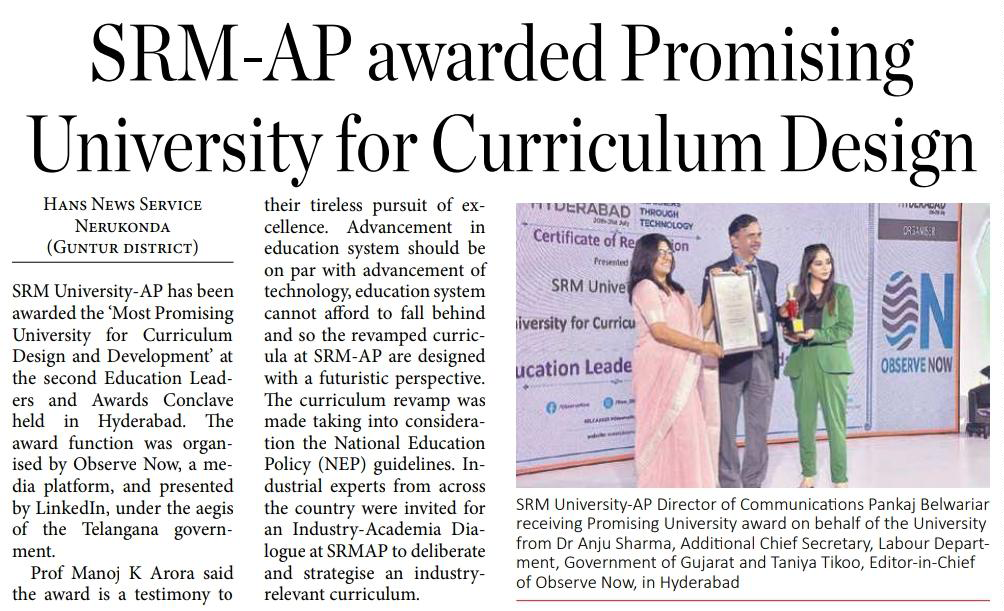
Surya
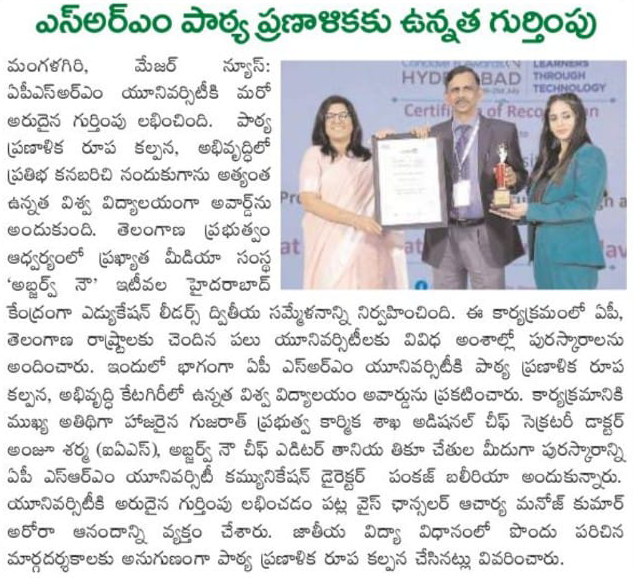
Visalaandhra
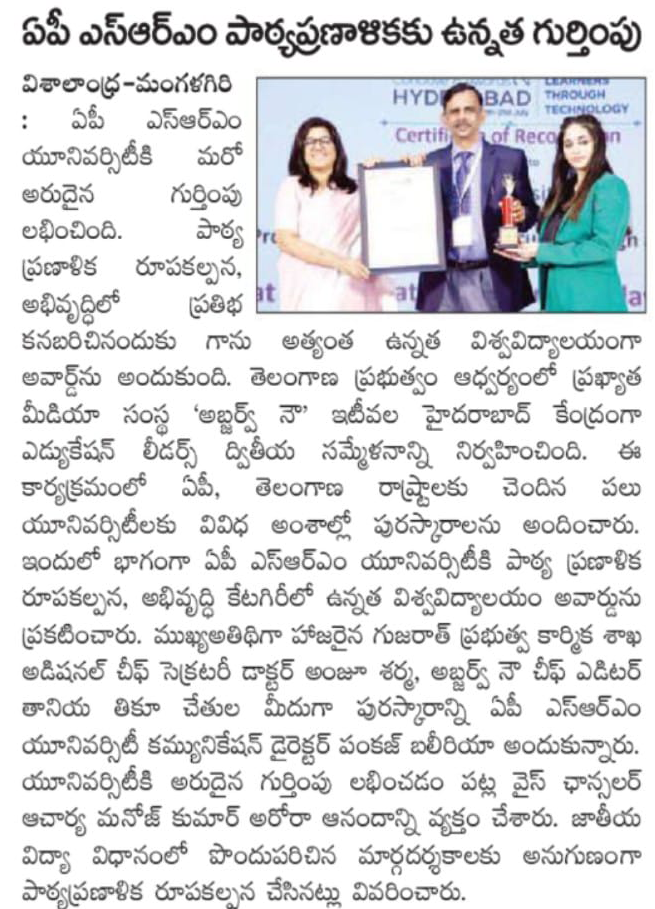
Andhra Jyothi
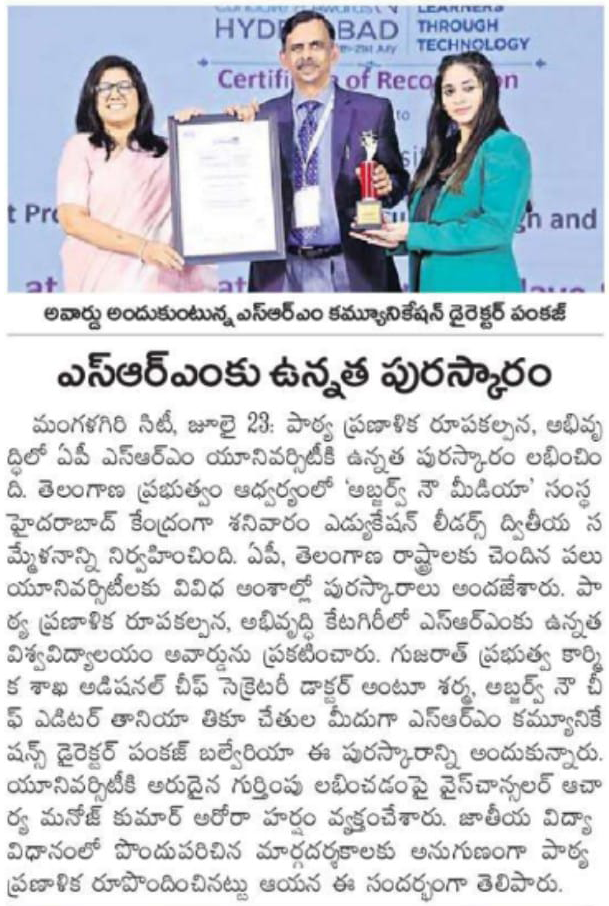
Andhra Prabha
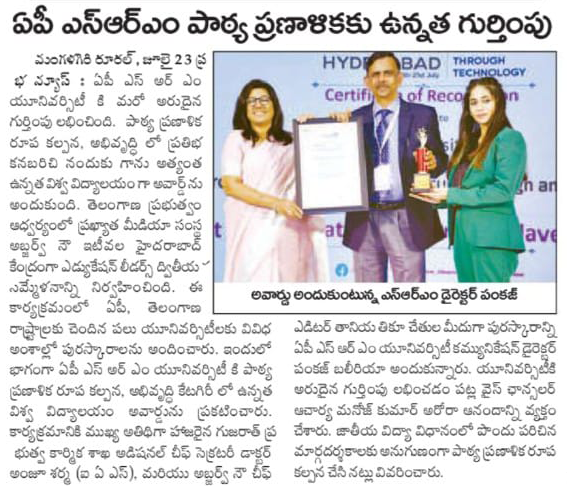
Sakshi
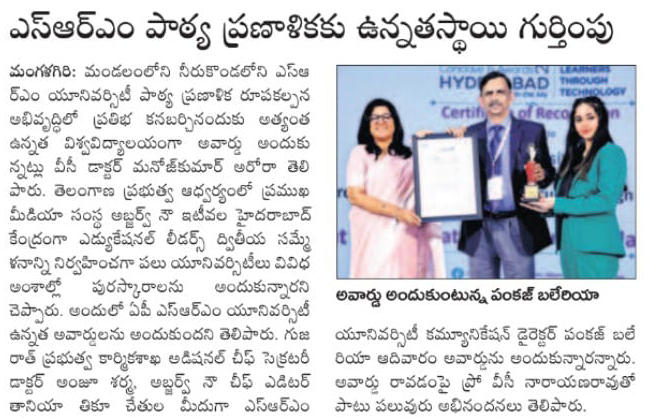
Praja Sakthi
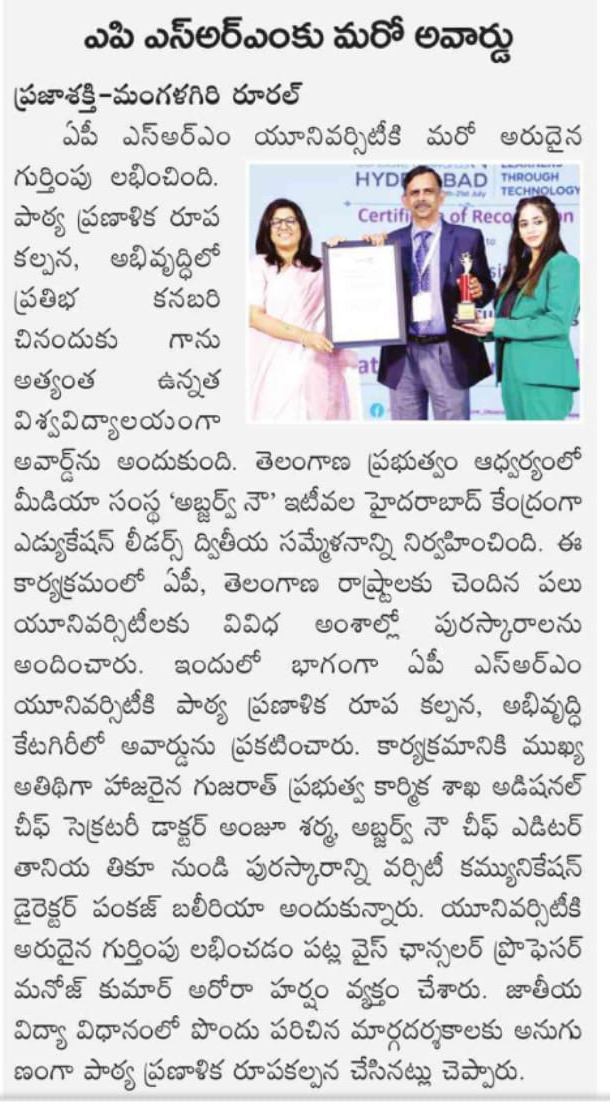
Andhra Patrika
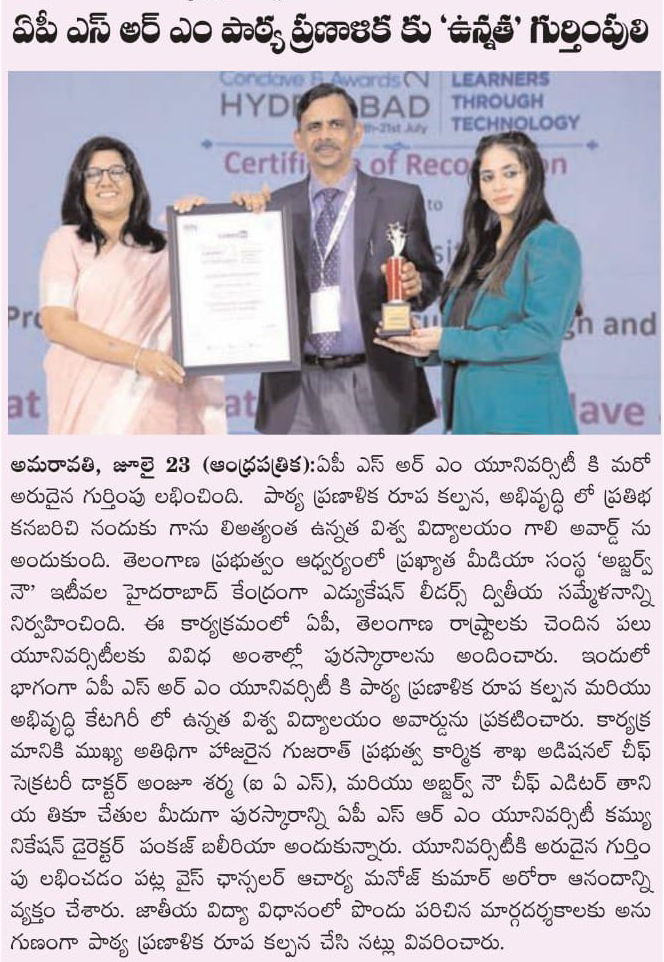
Vartha
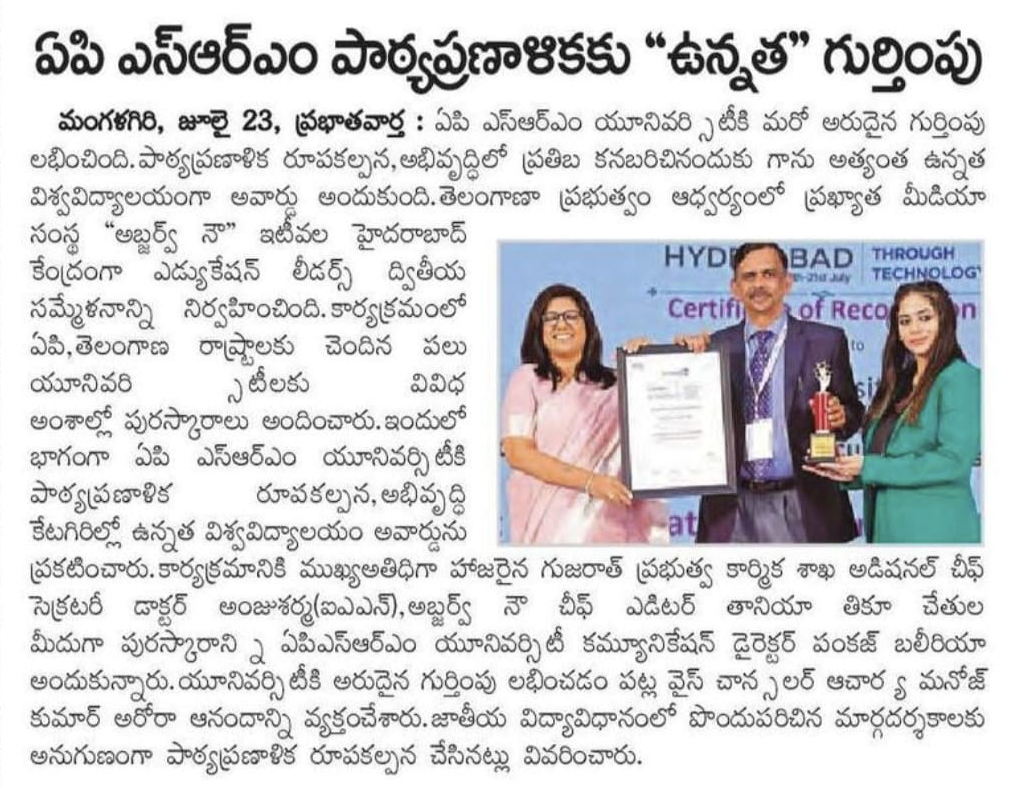
Eenadu
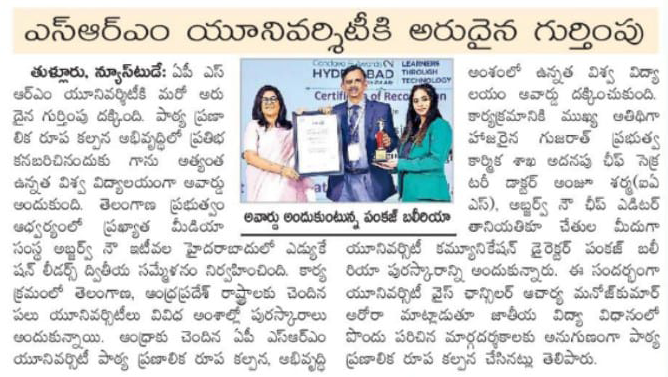
- HDFC Smart Branch Inaugurated at SRM University-AP July 24, 2023
The Hans India
Continue reading →
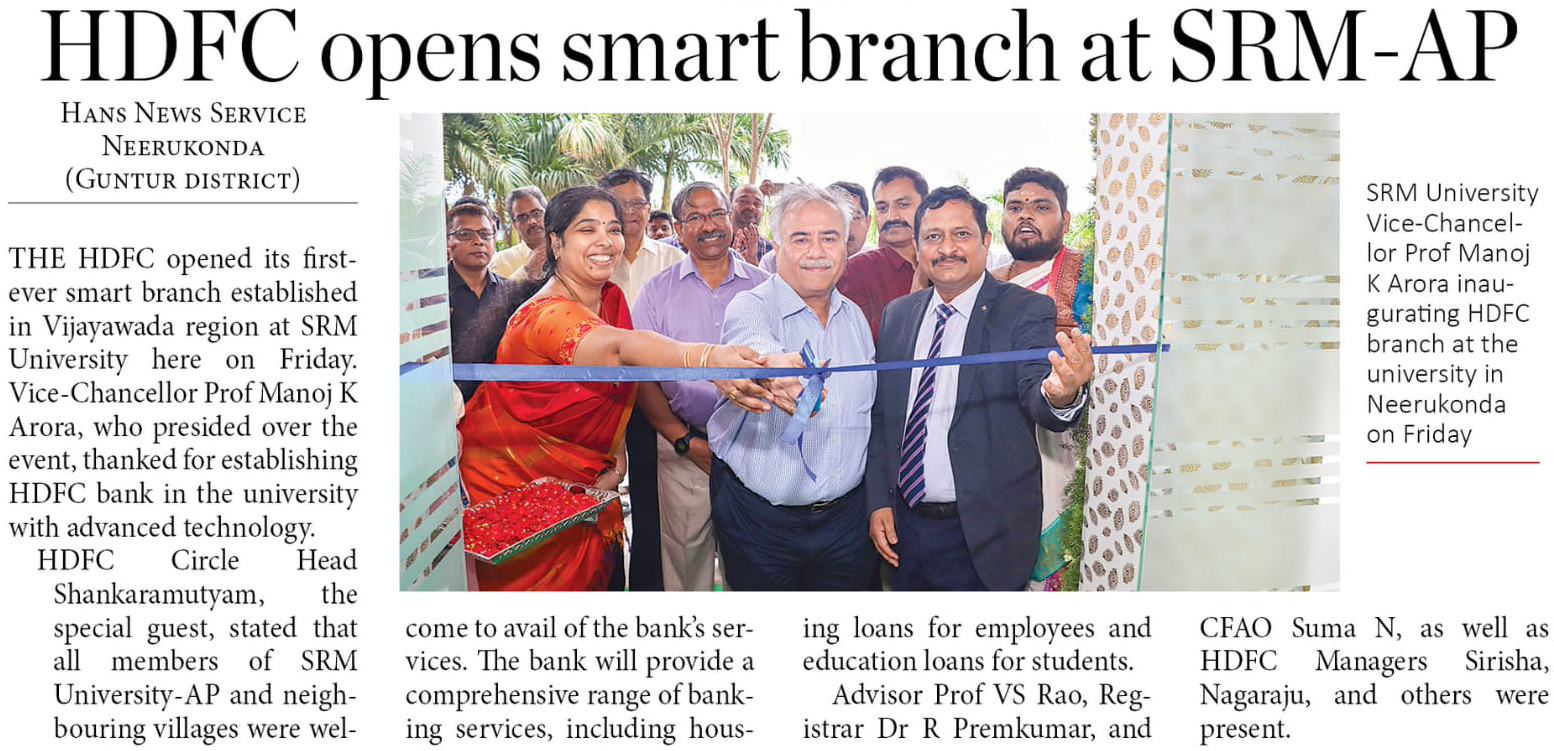
Eenadu
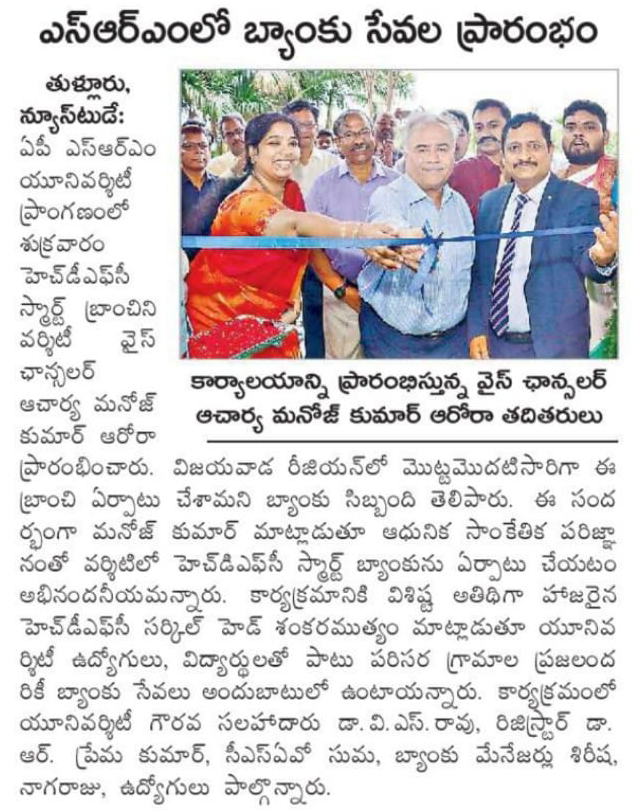
Surya
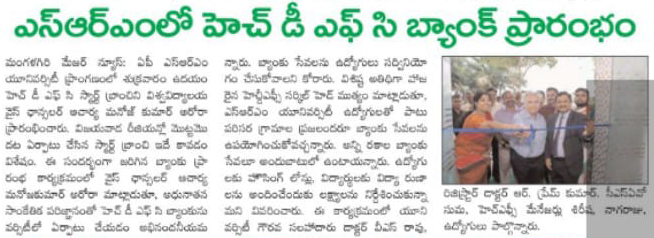
Andhra Prabha
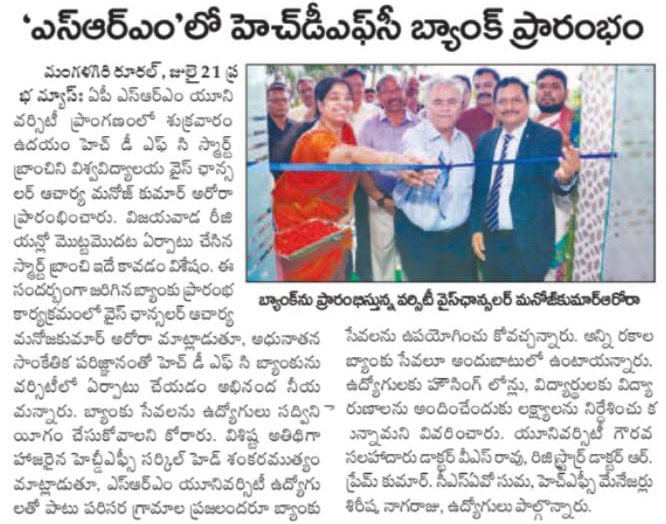
Prajasakthi
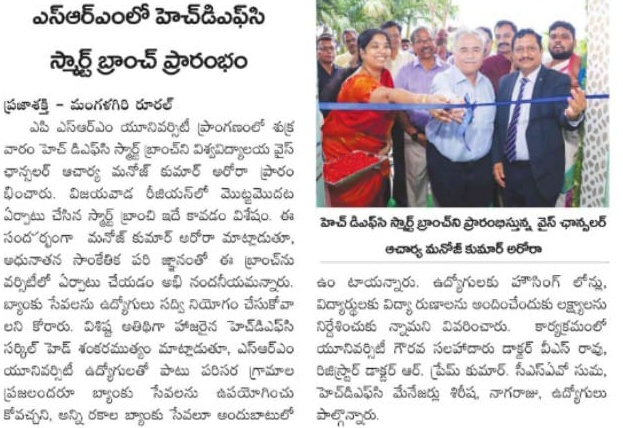
Visalaandhra
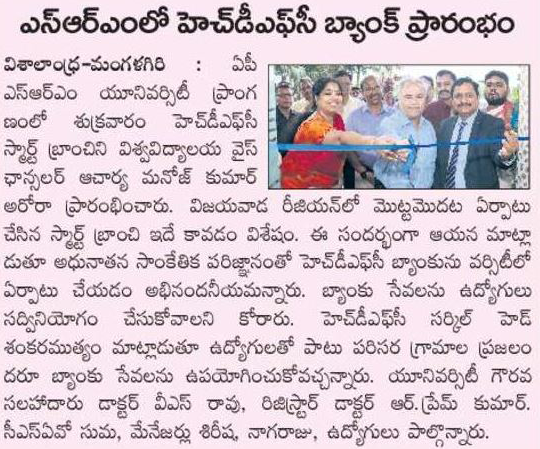
Andhra Patrika
